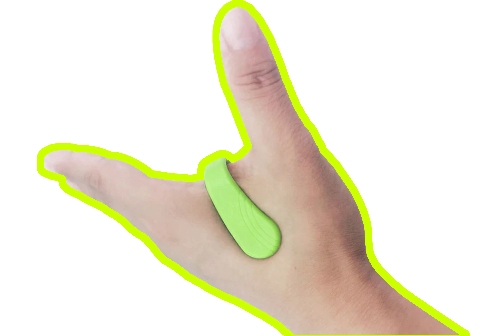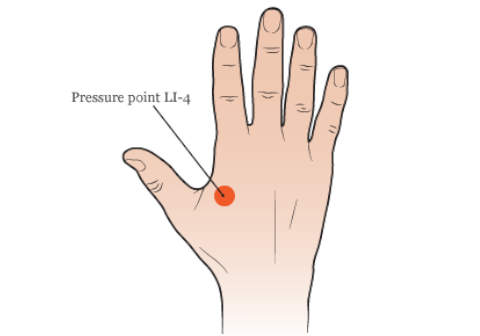The Art of Acupuncture: the Meridian Map.
In the realm of Eastern Medicine, there exists a profound art that transcends the boundaries of mere physicality – the art of acupuncture. In the quest for pain relief and holistic healing, this ancient practice emerges as a beacon of hope, guided by the wisdom of traditional Chinese medicine. As a seasoned practitioner with a deep understanding of Chinese herbalism and acupuncture, I invite you to journey with me into the heart of this art, discovering the origins, principles, and evolution of acupuncture that have made it a cornerstone of Eastern Medicine.
Latest Client Work!
Natoque eligendi
Natoque eligendi
Supporting Subheading
A Glimpse into Ancient Origins
The roots of acupuncture dig deep into the rich soil of antiquity, drawing sustenance from the ancient texts and scrolls that grace the annals of Chinese history. The term “zhen ci” (针刺), delicately translating to “needle prick,” encapsulates the essence of acupuncture. Dating back over 2,000 years, the ancient Chinese healers observed the intricate balance between the “yin” and “yang” energies that course through the body, seeking harmony within the life force known as “qi” (气).
The Foundations of Healing
Central to the art of acupuncture lies the profound concept of “meridians” or “jing luo” (经络). These energy pathways weave through the body, connecting organs, tissues, and emotions. The meridians serve as conduits for the vital qi, nurturing the body’s balance and vitality. The acupuncture points, often referred to as “xue” (穴), are like gateways to these meridians, allowing skilled practitioners to influence the flow of qi, addressing blockages and imbalances that lead to pain and illness.
Embracing the Yin and Yang
The interplay of “yin” and “yang,” the dual forces of nature, finds its resonance within the principles of acupuncture. In the tapestry of Eastern Medicine, “yin” represents the feminine, the nurturing, the cool, while “yang” embodies the masculine, the active, the warm. The art of acupuncture seeks to harmonize these opposing forces within the body, restoring equilibrium and vitality. This intricate dance of energies resonates deeply with the soul of holistic healing.
Evolution in the Modern Age
As time unfurled its wings, acupuncture underwent a metamorphosis, adapting to the ever-evolving landscape of modern healthcare. The wisdom of ancient techniques merged seamlessly with scientific understanding, and acupuncture gained recognition beyond the realms of traditional medicine. Today, the gentle insertion of fine needles, accompanied by techniques such as “moxibustion” (艾灸) – the burning of dried mugwort – and “cupping” (拔罐), elicits healing responses that transcend boundaries.
Personal Reflections: A Journey of Discovery
In my years of practice, I have witnessed the transformative power of acupuncture, the radiant smiles of patients whose burdens were lifted, whose pain dissolved into the ether. One patient, struggling with chronic pain, found solace in the delicate touch of acupuncture, as if the whispers of ancient healers were guiding me. These moments, these connections, embody the true essence of this art – the fusion of science and soul.
The Meridian Map: Understanding Energy Pathways
In the realm of ancient wisdom and modern exploration, a map unfolds – not of geographical landscapes, but of energetic pathways that crisscross our bodies, influencing our well-being. This map is known as the meridian system, a cornerstone of traditional Chinese medicine. Imagine a world where energy flows like rivers, and stimulating specific points along these pathways restores harmony within. As a practitioner steeped in the depths of Chinese herbalism and acupuncture, I invite you to delve into the intricacies of this meridian map, to understand how it serves as a key to unlocking balance and healing.
Mapping the Energetic Terrain
Picture this: your body as a canvas upon which the strokes of energy paint vibrant patterns. These patterns are the meridians or “jing luo” (经络), intricate pathways that connect organs, systems, and emotions. Each meridian has its own character, flowing with the currents of life force, or “qi” (气). Just as a river navigates mountains and valleys, qi navigates these pathways, nourishing and sustaining every aspect of your being.
The Dance of Yin and Yang
Within the landscape of meridians, the dance of yin and yang finds its expression. “Yin” is the cool, the nurturing, the receptive, while “yang” is the active, the dynamic, the expressive. Acupuncture seeks to harmonize these forces, allowing them to dance in unison. Imagine the “Tai Yin” and “Yang Ming” meridians – yin and yang counterparts – like two partners moving in a graceful waltz. Stimulating specific points along these pathways ensures that the dance of life within you remains in perfect rhythm.
The Qi Crossroads
Let’s imagine your body as a bustling city with intersections where energy converges. These intersections are “acupuncture points” or “xue” (穴) points, gateways that offer access to the meridians. For example, “Zusanli,” translated as “Stomach 36,” lies on the “Yang Ming” meridian and serves as a crossroad of vitality. Stimulating this point invigorates digestion, energizes the body, and supports overall well-being. It’s like reviving a bustling city square that had grown dormant.
An Apprentice’s Discovery
Allow me to share a personal story – a moment of revelation that echoed through my journey as an apprentice acupuncturist. As I delicately placed needles along the “Ren Mai” meridian, often referred to as the “Conception Vessel,” a sensation of warmth surged through me. In that moment, I realized that this wasn’t just a technique; it was an intimate conversation with the body’s energy. Connecting with this meridian was like connecting with a profound legacy of healing, spanning centuries and cultures.
Unlocking Balance through Meridians
The meridian map, my friends, is not just a visual aid; it’s a guide to unlocking balance. When qi flows smoothly along these pathways, health thrives. But when blockages or imbalances occur, discomfort and illness arise. Acupuncture enters the stage as the conductor of this energetic symphony. By stimulating specific points along meridians, we clear the pathways, allowing qi to flow unimpeded, restoring the body’s innate ability to heal.
The Five Elements Harmony
In the tapestry of meridians, the five elements – wood, fire, earth, metal, and water – interweave their energies. Each element resonates with specific emotions, organs, and qualities. For instance, the “wood” element corresponds to the liver and the emotions of anger and kindness. By addressing imbalances within these elements, acupuncture not only treats symptoms but also seeks the root cause, fostering a harmonious existence.
Embarking on an Energetic Journey
Our exploration of the meridian map, isn’t just an academic pursuit; it’s an energetic journey. The meridians are the threads that connect our physical, emotional, and spiritual dimensions. Acupuncture is the art that weaves these threads, crafting a tapestry of well-being.
So, for those seeking healing that transcends mere symptoms, consider acupuncture not just as a treatment, but as a voyage into the heart of your body’s energy, a journey where needles are guides and meridians are pathways to a life of balance and vitality.
A Tapestry of Healing
As we conclude our journey into the heart of acupuncture, let us not forget the centuries of wisdom that thread through its fabric. From the needles’ delicate touch to the ancient chants that resonate in its wake, acupuncture stands as a testament to the resilience of Eastern Medicine. So, dear seekers of pain relief and holistic healing, consider the intricate tapestry of acupuncture – a timeless art that binds us to the healing energies of the cosmos.
Drug Free Pain Relief
Acupressurepro™ - so easy to wear you'll forget it's on - until your headache is gone!



Frequently Asked Questions
Acupuncture for Digestive Harmony and Stress Relief
Chinese Medicine
It’s very self-regulating. So this point is located below the outside eye of the knee. So if you look at the knee there’s actually two little um eyes that we refer to as calf nose.
Not only is acupressure said to help with the release of gas, but it’s also believed to benefit other digestive conditions, such as stomach pain and constipation.
Patients who suffer from IBS who have constipation as their primary symptom may benefit from acupuncture treatment at the ST-36 point, which has a stimulatory impact on intestinal motility.
Migraines
Between the thumb and index finger. The webbing between thumb and index finger contains a stress-relieving pressure point. Gently pinch the spot between your opposite thumb and forefinger, holding the position.
The Thumb helps fend off emotions like worry and anxiety. The Index finger helps you fight your fears. The Middle finger helps control feelings of rage and bitterness.
1 – Take a dance break! 2 – Close your eyes, take deep breaths and stretch or meditate. 3 – Note three things you are grateful for.

